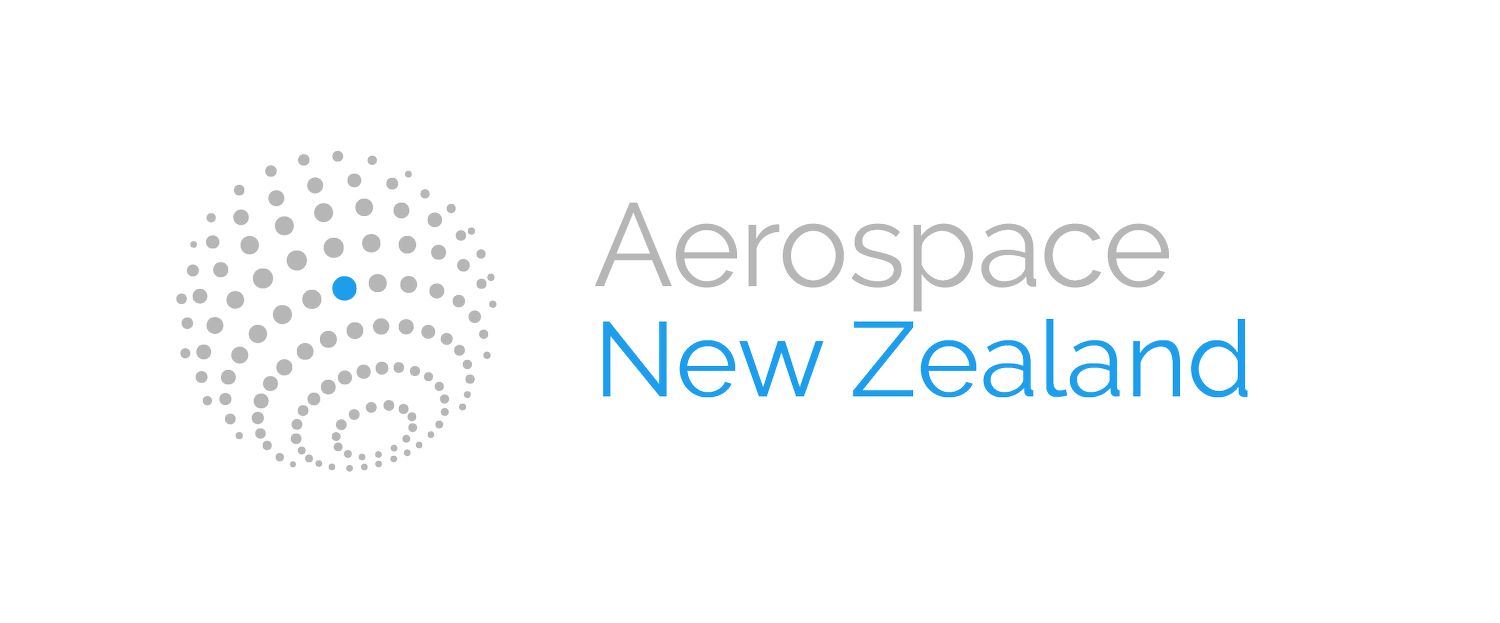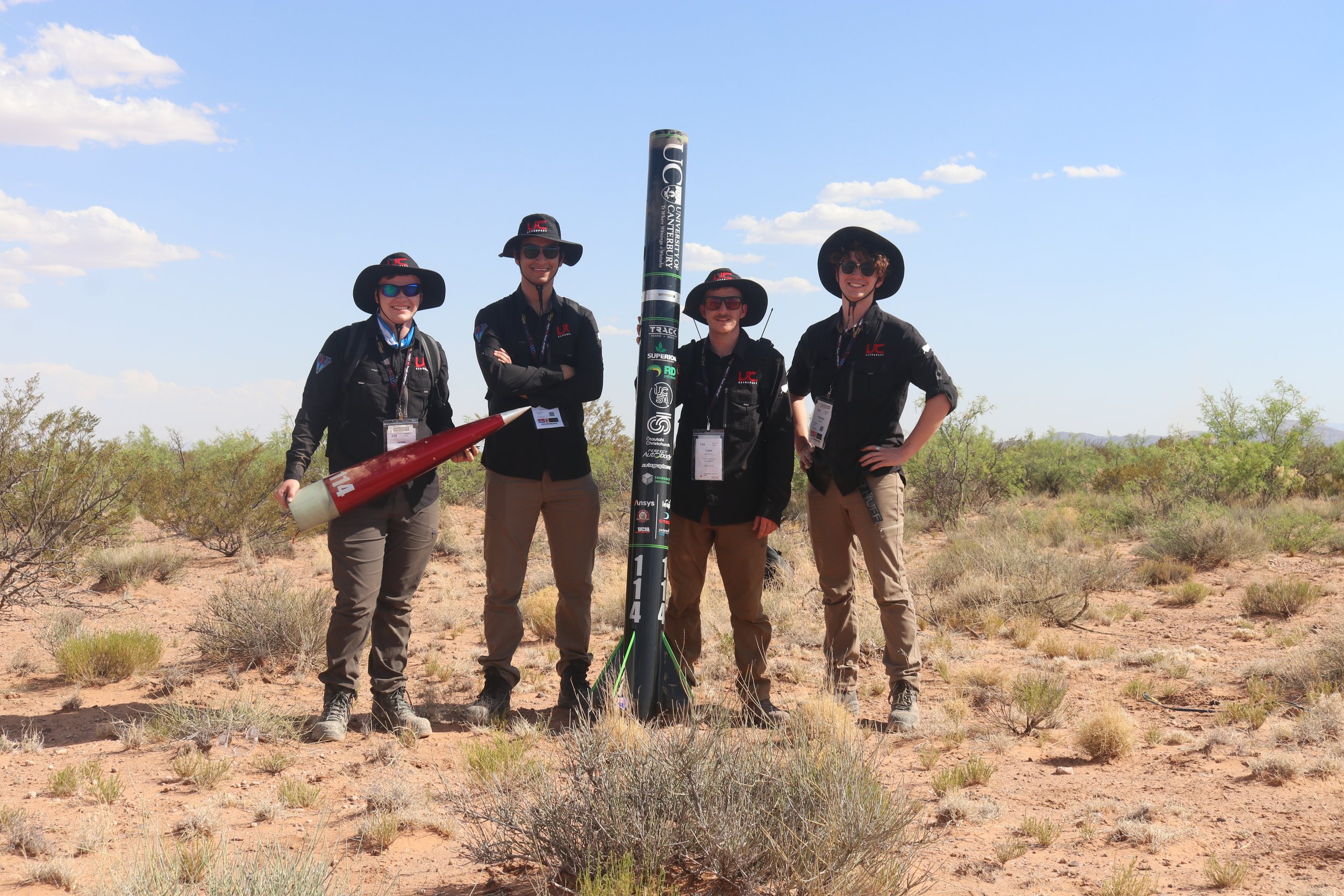UC Aerospace Victory in Spaceport America Cup 30K COTS 2024
Members of the UC Aerospace Spaceport Team pictured on recovering the airframe after a successful flight.
From left to right: James Graham - Spaceport Team Lead, Rushil Gentejohann - UC Aerospace Club President, Caleb Melchers - Mechatronics FYP Lead, Thomas Gawn
Last month, UC Aerospace once again won the 30K COTS Category, and placed runner-up for the Sportsmanship award in the Spaceport America Cup 2024.
The Spaceport America Cup competition is the largest intercollegiate rocketry competition in the world. A variety of rocket designs and categories exist, from SRAD (Student Researched and Developed) to COTS with both 30K and 10K altitude targets. This year, 28 other teams competed in the 30K Category (with the aim of reaching exactly 30,000 feet using only COTS (Commercial Off The Shelf) rocket motors), and with over 120 teams participating in the competition overall in 2024.
Design and build of the airframe (called Kārearea) was completed early in 2024, with a test flight being completed in Hamilton to validate the airframe and systems on-board. The airframe includes an active apogee control system, consisting of a set of air brakes which are designed to slow the vehicle to apogee at exactly 30K feet.
UC Aerospace’s Kārearea air braking unit
The air braking unit seen on the left consists of a set of three ‘petals’ that fold out to increase the drag of the vehicle. The student developed PCB on-board utilises the velocity, altitude and more measurements to estimate the vehicles apogee and deploy the air brakes respectively.
A Real Time Operating System was implemented on-board the air brakes unit, which presented a significant improvement over the previous 2023 air brakes unit. The housing was machined by one of UC Aerospace’s sponsors, Track Industries, while the remaining components were all built and developed in-house at the university.
The vehicle flies on an O5500X Motor, one of the largest commercially available rocket motors, that propels the vehicle to over 30,000 feet. The air braking unit is used to slow the vehicle down during the flight to optimally reach exactly 30,000 feet.
Spaceport Team members carry Kārearea in preparation for its flight.
The Kārearea airframe pictured above consists of a combination of Carbon Fibre and Fibreglass. The vehicle was entirely student developed and built, aside from two body tubes, which was provided by another UC Aerospace sponsor, C-Tech. The airframe stands at 3 metres in height and reaches just over Mach 2 in flight. In total, the airframe build was reported to take just under two months from start to finish, following design of the vehicle. Recovery of the airframe is completed by another student developed and built single-bay dual deployment parachute system.
“I’m most proud of the team that helped get the project over the line. Without them we wouldn’t have had such a massive success at the competition”
Team lead James Graham expressed pride in the whole project, and his team members. In addition to pride in his team, he also noted “That moment when the launch actually happened, and all the hours invested in the project actually paid off was probably my greatest moment in university thus far.” Following the win in the competition the Space Minister, Hon Judith Collins celebrated their success too noting that “Ambition like this is exactly what we need to see more of, and the team’s international success is great to see”.
“We want talented people to pursue careers in space-related fields as we strive to grow our economy. The future of our space and aerospace industry is looking bright if this team’s success is anything to go by”
Spaceport Team Members at the ESRA Spaceport America Cup Prize giving, placing first in the 30K COTS Category
Club President Rushil Gentejohann notes that “With the clubs growth to just under 300 members this year, seeing the clubs flagship, Spaceport America succeed at such an international scale is impressive, and no doubt will serve to inspire our younger members.” UC Aerospace is a club based out of the University of Canterbury in Christchurch, and is the largest university aerospace club in New Zealand. Previously the club was focused on reaching the boundary of space (the Kármán line), now switching their focus to competition rocketry, like that at Spaceport America Cup.
“The UC Aerospace Clubs success at Spaceport America just demonstrates UC’s and the wider New Zealand aerospace industry’s ability to compete on an international scale”
The team consisted of 9 students, and two faculty members. Structured as a pair of final year projects (FYP’s) the Mechanical team included James Graham, Mia Dicey, Thomas Gawn and Elliott Alloo. The Mechatronics team included Caleb Melchers, Darcy Green, Oliver Clements and Stefan Caird. Along with the two FYP teams, Club President Rushil Gentejohann along with Mechanical Engineering Faculty members Bruce Robertson and John Cater accompanied the teams to the United States.
The full UC Aerospace Spaceport America Student Team
Back row (Left to Right): Oliver Clements, Rushil Gentejohann, Elliott Alloo, Thomas Gawn, Stefan Caird. Front Row (Left to Right): James Graham, Caleb Melchers, Darcy Green, Mia Dicey





